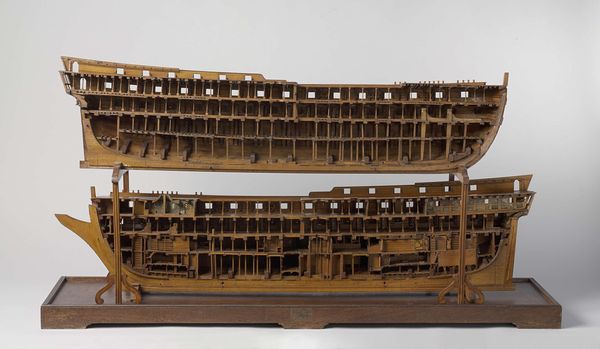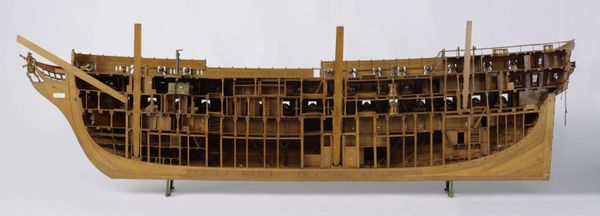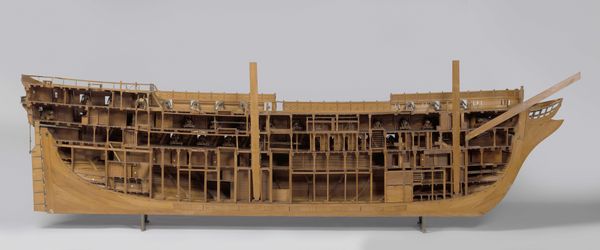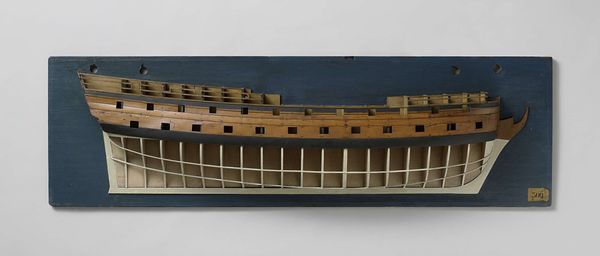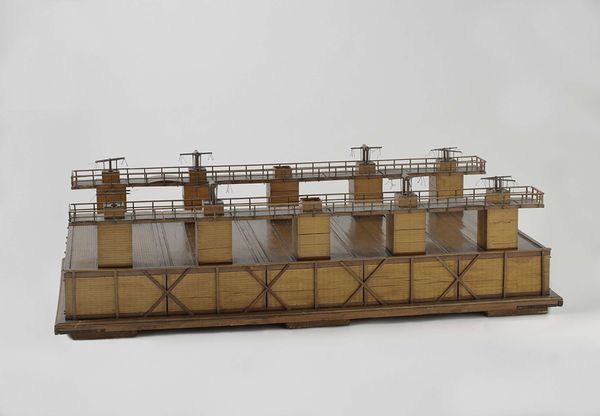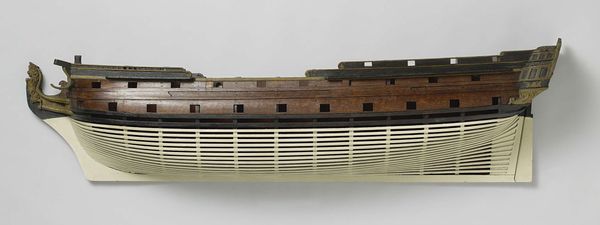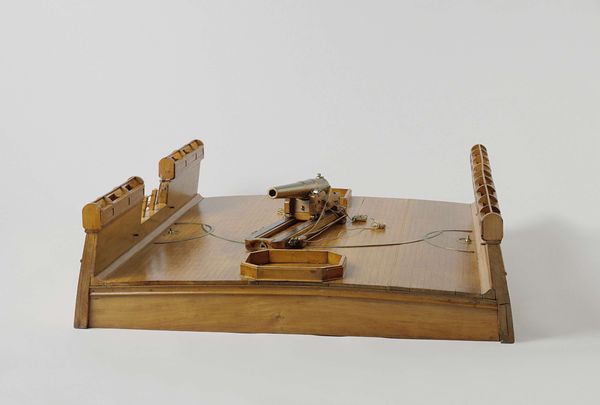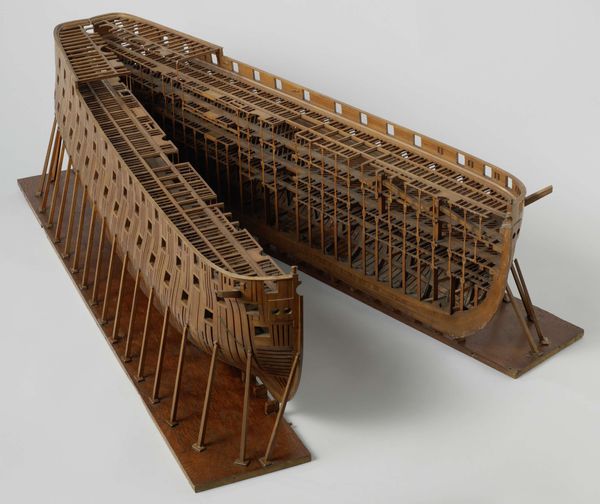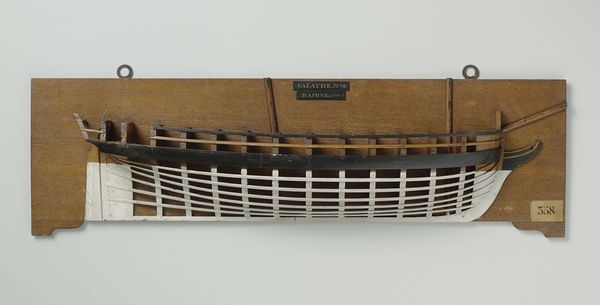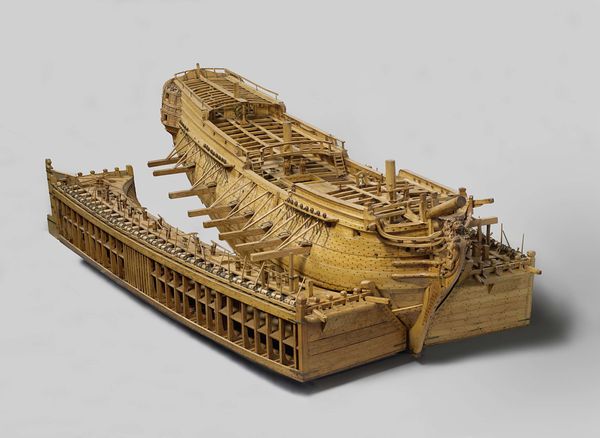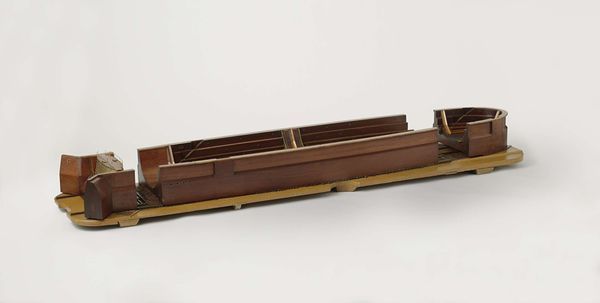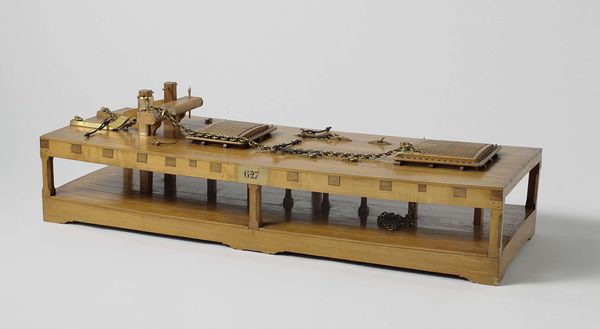
sculpture, wood, architecture
#
geometric
#
sculpture
#
architecture model
#
architectural drawing
#
wood
#
architecture
Dimensions: height 28.4 cm, width 130.2 cm, depth 24 cm
Copyright: Rijks Museum: Open Domain
Curator: This delicate object before us is a half model of a floating 32-gun artillery battery, crafted around 1861 at the Rijkswerf Willemsoord. Editor: It’s quite striking. I'm immediately drawn to its open skeletal form. It's like seeing the ghost of a warship, all intricate gridwork and raw potential, and it makes me feel a little uneasy. Curator: Notice the exquisite geometry. Each precisely cut wooden element interlocks to create a complex structural diagram, highlighting the elegance of naval engineering. Observe how the light filters through, creating patterns that dance across its surface. Editor: But what kind of world produced such an artifact? The American Civil War was raging in 1861; these batteries hint at broader shifts in global power, the rise of industrial warfare and, obviously, maritime colonialism. Who built these vessels and whom were they intended to harm? Curator: An intriguing point, yet I encourage viewers to contemplate the craftsmanship itself. How the artisan translated technical drawings into tangible form. The interplay of horizontal and vertical lines establishes a harmonious visual rhythm, further emphasizing its function as a design object. Editor: I see your point, but that craftsmanship has consequence, doesn't it? To really grapple with this piece is to look at who commissioned it, the historical reasons that fueled the floating artillery battery concept, and whether the world made better or worse by such projects. What do these types of materials signify and imply to their immediate communities? Curator: Such queries undoubtedly enrich its narrative. But may we acknowledge its sublime materiality as well? The warm hue of the wood, its texture, the manner in which these raw elements achieve resolution as an aesthetic, autonomous construction of artistic skill, ingenuity, precision. Editor: A chillingly beautiful object then, made with care and calculation as an instrument of state-sponsored aggression and subjugation. Considering this paradox, I now have some feelings to process. Curator: Indeed. As we part, take time to contemplate how the model’s delicate balance reflects art’s uncanny ability to bridge form and content.
Comments
rijksmuseum about 2 years ago
⋮
The Royal Netherlands Navy converted wooden ships of the line into floating batteries, hoping to give these expensive vessels a second lease of life as artillery plat-forms for the defence of Dutch river estuaries and inland waterways. This model represents the battery Neptunus, which was fitted with 32 guns. The Neptunus was origi-nally built as a ship of the line with the same name.
Join the conversation
Join millions of artists and users on Artera today and experience the ultimate creative platform.
